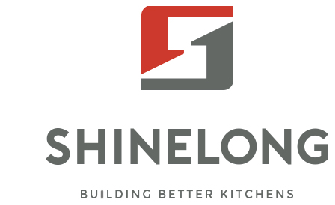News
Selecting the Right Refrigeration Equipment for Your Commercial Kitchen
Key Considerations for Commercial Refrigeration Equipment
Capacity and Space Efficiency
Getting the most out of refrigeration systems in commercial environments starts with knowing what the business actually needs when it comes to equipment capacity. How much product needs storage space and how often deliveries come through play major roles in picking the correct size system. Getting this balance right keeps operations running smoothly without hiccups. Space matters too - how things fit together affects day to day workflow efficiency. Stores that manage their layout well while keeping everything accessible avoid the messiness of overcrowded storage rooms. NSF International reports that poor space management can drive up operating expenses around 15% or more, which makes good spatial planning not just smart but essential for businesses looking to control costs.
Temperature Control and Energy Efficiency
Keeping temperatures just right matters a lot when storing perishable goods and following health regulations since different foods need their own sweet spot temperature ranges. When businesses install tech that saves energy like better insulation or compressors that adjust speeds, they end up using less power overall. Take Energy Star certified refrigeration units for instance these can cut electricity bills anywhere from 10% all the way down to half what they used to be, which adds up nicely on the bottom line after months of operation. Beyond keeping food fresh longer, these systems actually help companies run greener operations simply because they don't guzzle so much electricity day in and day out.
Durability from Reliable Refrigeration Equipment Manufacturers
When picking out refrigeration gear, going with established brands generally means getting something that lasts longer and works better. Companies that put real effort into their materials and tech tend to make machines that stick around for years instead of breaking down every few months. Take a look at what kind of warranty comes with the unit and how responsive the company is after sale too. These factors actually tell a lot about whether the fridge will hold up under pressure. Some industry numbers show that spending extra on quality refrigeration upfront cuts down on fixing costs and lost time when things break down by roughly a quarter. For anyone running a business where cold storage matters, this makes all the difference between smooth operations and constant headaches down the road.
Types of Commercial Refrigeration Equipment
Walk-In Units for High-Volume Storage
For businesses needing serious storage space for perishable goods in a temperature-controlled setting, walk-in units are pretty much a must have these days. The extra room and flexibility they provide makes them especially good fit for restaurants with big menus and lots of different ingredients to store. These units keep things running smoothly because they let staff organize and preserve all those food items without clutter getting in the way. According to recent industry reports, the market for walk-in coolers is growing at around 6.5 percent each year, which shows just how important they've become across many different industries. When companies invest in quality walk-in units, they get two main benefits: managing large volumes of inventory becomes much easier, and compliance with strict food safety standards isn't as challenging either.
Undercounter Models for Compact Spaces
Refrigerators designed to fit underneath counters or tables really save space, which is great news for those working with tight kitchen spaces or running bars where every inch counts. Even though they take up minimal room, these units still offer plenty of storage space, so businesses can get the most out of whatever floor space they have available. According to recent market research, around 40% of small eateries go for this type of unit because they just make better sense when space is at a premium. For anyone trying to create a kitchen that looks clean but works well, adding one of these under counter models often turns out to be a smart move that pays off in both appearance and functionality.
Multi-Zone Refrigeration Equipment for Diverse Needs
Businesses that need different storage temperatures for their products often turn to multi zone refrigeration units. These coolers let operators set individual temps for meat, dairy, produce and other perishables all within one unit. The setup saves time because staff don't have to hunt through multiple appliances to find what they need. According to a recent survey of restaurant managers, around 30% saw better inventory control after switching to these systems. Restaurants and grocery stores adopting this technology can handle a wider range of menu items without compromising quality. Each product gets stored at its ideal temperature which helps preserve freshness longer. Plus, many owners report lower electricity bills over time since these units are generally more energy efficient than running several smaller coolers separately.
Matching Equipment to Your Kitchen's Workflow
Assessing Storage Needs Based on Menu Offerings
Selecting proper commercial refrigeration begins with looking at what goes on the menu board and what ingredients sit behind the scenes. Restaurants that take time to map out their daily specials and inventory lists tend to figure out exactly how much cold storage they actually need. Matching storage options to workflow patterns makes all the difference too. When chefs can grab commonly used items without hunting through multiple units, meal prep times drop significantly. Industry reports suggest kitchens that organize storage around menu demands see productivity gains upwards of 20 percent. The bottom line isn't simply securing sufficient fridge space but ensuring that every cubic inch works for specific food items and preparation methods across different service periods throughout the week.
Optimizing Layout with Refrigeration Equipment Suppliers
Partnering with refrigeration equipment suppliers gives kitchens the chance to tailor their space according to specific operational requirements. These suppliers often bring expertise on where to place cooling units so they fit naturally within daily operations rather than disrupting them. When looking at how food moves through a kitchen, experienced suppliers will spot areas where ingredient traffic gets backed up and suggest better arrangements. Some studies indicate good layout planning can cut down on wasted time during peak periods by around 15 percent, which means faster service overall. Working alongside professionals familiar with both local kitchen challenges and modern refrigeration tech helps create spaces that actually work better day after day instead of just looking efficient on paper.
Energy Efficiency and Total Cost of Ownership
Comparing Energy Star Ratings
For business owners looking to cut down on energy consumption in their refrigeration systems, getting familiar with Energy Star ratings makes good sense. Basically, these ratings tell us how much power the equipment uses relative to other models without such certification, and this difference adds up over months and years. Sure, buying energy efficient appliances usually means paying more initially, but most folks find that their monthly electricity bills drop noticeably after installation. Industry data suggests businesses typically save around two hundred dollars each year per unit when switching to Energy Star certified machines. Commercial kitchens especially benefit since they often run several refrigerators simultaneously throughout the day. Restaurant owners who opt for these rated units not only help protect the environment but also see real money saved on their bottom line month after month.
Long-Term Savings from Quality Refrigeration Equipment
Looking at the cost versus benefit when choosing between good quality refrigeration gear and the cheaper stuff matters a lot for figuring out what it really costs to run a kitchen in the long run. Better quality fridges just don't break down as often and last longer, so restaurant owners end up saving money after a while. Take those premium models for example they usually come with better parts that hold up under constant use, meaning less time spent fixing things. Some studies show that spending extra on top notch refrigeration can actually cut down total costs by around 30% compared to going cheap. The numbers make sense when thinking about it beyond just what's on the price tag. Restaurants that invest in decent refrigeration equipment tend to have smoother operations overall. Their cold storage stays reliable day after day, which helps keep food fresh and customers happy without all the unexpected repair bills piling up.
 After-Sales:
After-Sales:
 EN
EN
 AR
AR
 HR
HR
 NL
NL
 FI
FI
 FR
FR
 DE
DE
 EL
EL
 HI
HI
 IT
IT
 PT
PT
 RO
RO
 RU
RU
 ES
ES
 TL
TL
 ID
ID
 SL
SL
 VI
VI
 ET
ET
 MT
MT
 TH
TH
 FA
FA
 AF
AF
 MS
MS
 IS
IS
 MK
MK
 HY
HY
 AZ
AZ
 KA
KA
 UR
UR
 BN
BN
 BS
BS
 KM
KM
 LO
LO
 LA
LA
 MN
MN
 NE
NE
 MY
MY
 UZ
UZ
 KU
KU









